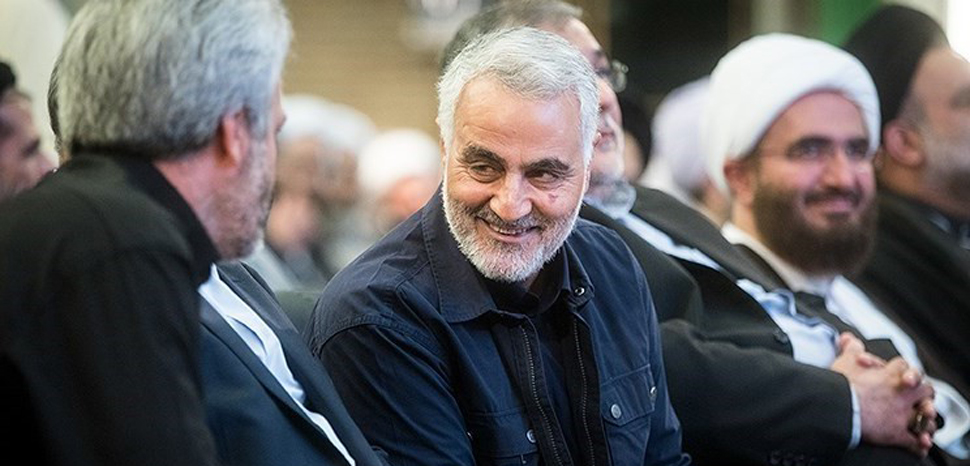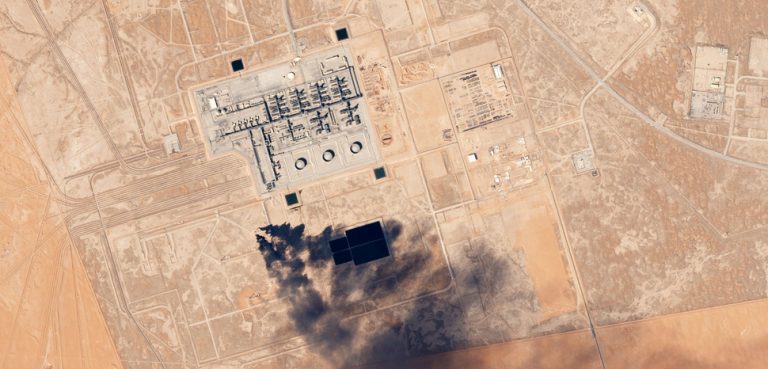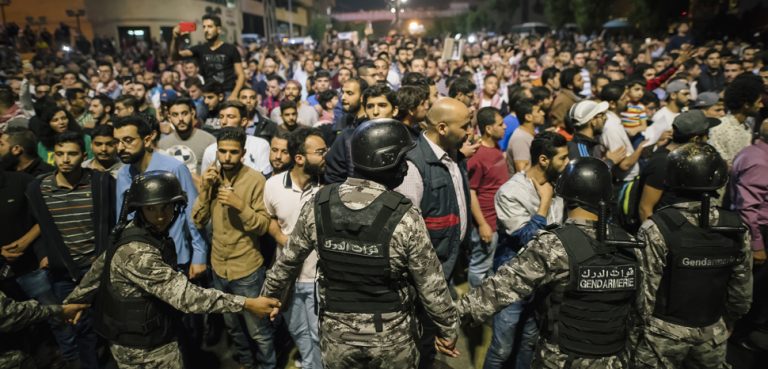On January 3, 2020, Iran Islamic Revolutionary Guards Corps (IRGC) General Qassem Soleimani was killed in a drone strike launched by US forces at Baghdad’s International Airport. The attack was orchestrated as a response to a previous assault on the American Embassy in the same city, which had been carried out by Shiite militia members closely associated with Iran just days before.
Background: Soleimani’s unique profile
Former CIA Director David Petraeus claims that, back when he was the top US military commander in Iraq, he was contacted by none other than Qassem Soleimani, the commander of the elite Iranian Quds Force himself. According to Petraeus’ account, Soleimani’s message was allegedly the following: “General Petraeus, you should know that I, Qassem Soleimani, control the policy for Iran with respect to Iraq, Lebanon, Gaza, and Afghanistan. And indeed, the ambassador in Baghdad is a Quds Force member. The individual who’s going to replace him is [also] a Quds Force member.”
Such a statement comes across as a crass boast of pride; but it was not exactly so far-fetched either. After all, Soleimani had been acting as the instrumental operational mastermind behind Iran’s strategic rise as a regional hegemon via control of the so-called “Shiite Crescent.” This was an expansionist project that intended to establish an Iran-dominated corridor from Afghanistan’s westernmost regions to the Mediterranean coast of Lebanon, which of course was also supposed to encompass Iraq and Syria. The materialization of such an agenda would have meant the contemporary revival of the Persian imperial tradition, something that goes back thousands of years (the Parthians even fought against Greeks, Romans, and Byzantines). This geostrategic scheme would have also facilitated the encirclement of both Saudi Arabia and Israel, Tehran’s top geopolitical rivals.
Moreover, Soleimani was not precisely a conventional military leader. He was more than skillful when it comes to irregular warfare, asymmetric tactics, covert action, and psychological operations, as well as the manipulation of sectarian violence, tribal politics, and social agitation. This often entailed the instigation of ‘popular’ uprisings, the execution of terrorist attacks, and the involvement of militant forces as Iranian proxies in unconventional battlefields. An interesting paradox is that Soleimani was usually depicted as a champion of the so-called ‘Axis of Resistance’ –which advocated worldwide and regional ‘anti-imperialist struggle’ against American, Western, and Israeli interests – even though, concerning the facts on the ground, he was one of the most visible avatars of Persian imperialism itself.
Likewise, Soleimani’s statecraft was highly versatile. For instance, he actively supported the al-Assad regime’s war effort against its jihadist foes – including groups like the Al-Nusra Front and Islamic State – In contrast, he backed Houthi rebels against an established government in Yemen. He also forged close ties to groups like Hezbollah, Islamic Jihad, and Hamas, all of which share few common denominators aside of being sworn enemies of Israel.
This all means that Iran’s geopolitical strategy during the last two decades cannot be understood without envisaging the key role played by Soleimani. As a result, he was feared by his enemies and sometimes it was hard to tell if he was a brutal practitioner of realpolitik, an apocalyptical zealot, or a creative troublemaker. Perhaps none of those descriptions is entirely inaccurate.
Geopolitical impacts
Soleimani was an exceptional high-value target in many ways. Given his peculiar and highly strategic profile, Soleimani was one of the most powerful men in Iran. He was often portrayed by the Iranian regime as a shadowy and deadly figure who combined traits of real or fictional characters like Erwin Rommel, James Bond, and Jack Bauer. In other words, it was subtly acknowledged that he was a nasty player on the Middle Eastern geopolitical chessboard, but also one whose actions were supposedly justified in terms of convenience for the Iranian national interest. Therefore, from Washington’s viewpoint, his head on a silver platter is a far more prized trophy than the dead body of Osama Bin Laden ever was.
Hence, the assassination of a military commander that was often seen as living legend – by both allies and foes alike – is profoundly humiliating because it demonstrates that US intelligence and military capabilities can pierce through the gaps in Iranian operational security.
On the other hand, a dispassionate analysis reveals that the American strike – although certainly bold – can be interpreted as a calculated risk. After all, it took place on Iraqi soil and as a retaliatory measure intended to punish Iranian mischief, including not just the aforementioned attack on the US Embassy in Iraq, but also the constant skirmishes, rocket attacks, and the tensions fueled by an unclear incident – with apparent Iranian involvement – in the Strait of Hormuz in 2019.
Another episode worth emphasizing is the attack that targeted the Saudi Aramco oil processing facilities last year, an event that had an impact on global oil markets. If the US had not previously become self-sufficient on energy security (a concern motivated precisely by the imperative not to rely on suppliers that are potentially hostile or unstable), that alone would have probably triggered a sharp military response from the Pentagon.
In sum, according to the US perspective, Iran was becoming excessively bold, especially considering that the direct American military presence in the region has been diminishing. Hence, Washington concluded that the attack on its Embassy in Iraq was the straw that broke the camel’s back. Consequently, its retaliatory strike against the Iranian spymaster sends a powerful message: “it is not wise to mess with the US for long and expect to go unpunished.”
The resonance of the message is amplified by the fact that Iran has tried to engage great powers interested in curtailing the reach of US geopolitical influence throughout the Eurasian landmass (i.e. Russia and China). For example, Iran has courted multilateral institutions headed by either Moscow (the Collective Security Treaty Organization), Beijing (the Asian Infrastructure Investment Bank), or both (the Shanghai Co-operation Organization). Another relevant precedent is the fact that, in late December 2019, Iran, Russia, and China held naval war games in the Gulf of Oman. The exercises were described by an Iranian admiral as “a direct challenge to US influence in the Middle East.” Something like that did not go unnoticed by the US intelligence community.
In this context, the idea that Soleimani’s demise will unleash World War III – which is being wildly disseminated in several social media platforms – is out of touch with reality. A clear sense of proportion is needed in order to keep things in perspective. His death will certainly increase geopolitical tension, but its impact can be weathered by the perennially volatile region, especially considering that no significant stakeholder truly wants an armed confrontation right now.
The current circumstances do not favor the eruption of a conflict that can easily spiral out of control. Neither Iran nor the US possesses the critical mass to fight each other frontally on a conventional military battlefield. The Iranian plateau – the country’s heartland – is shielded by the Zagros mountains and an arid hinterland, which makes it notoriously difficult to conquer though a ground invasion. Plus, Iran’s demographic weight represents another structural obstacle (its population is higher than those of countries like Germany, France, and the UK). However, that does not exclude the possibility of a limited campaign of airstrikes.
Furthermore, despite seeking a convenient business-like engagement with Iran in several fields, Russia and China are not willing to go to war simply to protect Iran. In the grand scheme of things, the stakes would be dangerously high. For Moscow, Iran is an avid consumer of weaponry and military hardware, whereas for Beijing it is an energy provider and economic partner. Their direct participation in a land war fought on Iranian soil might be a black hole that would drain vast amounts of troops, power, and funds, so even a pyrrhic victory would be politically and economically disastrous. It could also derail their plans to reassert their positions as great powers with global ambitions. Last but not least, the Russians and the Chinese do not want to find themselves deprived of both Arab cash and Israeli high-tech gear (in the long run, those assets are more strategically valuable than Iranian sheer bellicosity).
Nonetheless, this does not mean there will be no consequences; however, they will be likely limited in terms of scope and risk. Iran’s National Security Council cannot afford to recommend a suicidal course of action. That likely means that there will be retaliatory actions – launched by Iran’s constellation of proxy forces – against American, Saudi, and Israeli positions in the Middle East and maybe in other corners of the world as well. It must not be forgotten that, back in the 90s, Iranian proxies attacked a Jewish community center in Buenos Aires and the Israeli Embassy in Argentina. Hence, the scenario of a multi-front terrorist campaign is entirely plausible.
In fact, the Iranians have allegedly identified 35 targets – to be allegedly hit within weeks – which include American warships, military facilities, diplomatic compounds, and even Tel Aviv. According to some sources, it seems cyberattacks are also being contemplated by Tehran. In turn, President Trump has warned that the US has pinpointed 52 Iranian sites. It was heavily implied that the list includes critical infrastructure, strategic nerve centers, and historical landmarks – all of which would be targeted if Tehran opts to add fuel to the fire.
Domestic issues in Tehran and Washington
Qassem Soleimani was closely tied to the hardline branch of Iranian nationalism, as well as to the Ayatollahs. He was also frequently mentioned as a prospective presidential candidate. Therefore, there will be a tremendous political pressure to avenge his death from this sector. Yet their options are limited. As usual, impersonal geopolitical forces constrain the margin of action for human agency.
Moreover, even though Tehran will definitely try to rally the Iranian populace around the flag, not every segment of Iranian society will be willing to join a Shiite crusade against the ‘Great Satan’ or its regional allies. In fact, the Iranian regime has been facing a rising wave of popular discontent, fueled by legitimate grievances related to the following causes:
The socio-politically repressive nature of Iran’s theocratic regime is alienating younger generations. Its backwardness is seen by many as unnatural in a country whose civilization has been consistently cosmopolitan and enlightened since classical antiquity.
A lack of strategic foresight has prevented Iran from modernizing and diversifying its productive sectors. As a result, it is heavily dependent on oil exports, something that represents a critical vulnerability considering the commodity’s prices fluctuations.
A great deal of resources and manpower has been dedicated to quixotic military adventures abroad – like the ones in which General Soleimani played a prominent role – even though there are also pressing needs waiting to be met at home, like the demand of the educated middle classes for better professional and academic opportunities.
The most noteworthy implication of the above is that it would be tremendously challenging for Iran to wage conventional war against the US under such conditions. A chain reaction of intensifying strikes and counterstrikes could even potentially lead to the overthrow of the Ayatollahs.
On the other hand, Iran is not the only actor whose behavior is being shaped by domestic realities. Washington is another epicenter where the resulting (geo)political shockwaves are being felt. The Trump administration is justifying its decision as a just punishment for a man who was responsible for the deaths and injuries suffered by hundreds of American servicemen in the Middle East during the last few decades, and as the necessary neutralization of a world-class terrorist puppet-master.
However, it is debatable if it was simply a matter of statecraft. After all, it is crucial to bear in mind that the Republican Party needs to close ranks in order to achieve victory in the framework of Trump’s impeachment process and, more importantly, in his bid for re-election in the upcoming 2020 presidential election. So far, GOP support has been unanimous for all intents and purposes. The elimination of Soleimani also gives them a valuable opportunity to differentiate themselves from the policy of appeasement toward Iran followed by Barack Obama. It is a risky political gamble but it could pay off, particularly if the nastiness of the aftermath can be reasonably contained.
In contrast, the Democrats (especially the Party’s most militant left-wing cadres) will try to portray Trump’s bold move as an incendiary, irresponsible, and unlawful act that could dramatically worsen the situation in a chronically tense region, and one where no vital US interest is directly at stake anymore. Hence, the specter of another military quagmire will be summoned as a fear-mongering political maneuver to paint Trump as an irresponsible trigger-happy cowboy.
Concluding thoughts
Geopolitics is an utterly ruthless and dangerous game in which recklessness seldom goes unpunished, especially in a place like the Middle East. In other words, those that play with fire in the middle of a powder keg usually end up badly burned. Such bitter truth becomes evident sooner or later. That lesson was dramatically illustrated by Qassem Solemani last week but it also needs to be assimilated by other players whose actions might substantially raise the stakes in an already turbulent region where turmoil can rapidly engulf anyone and everyone. It would thus be wise to keep in mind that “of all manifestations of power, restraint impresses men most,” as the Athenian historian Thucydides wrote many centuries ago.
The views expressed in this article belongs to the author alone and does not necessarily reflect those of any institutions with which the author is associated with or Geopoliticalmonitor.com.




